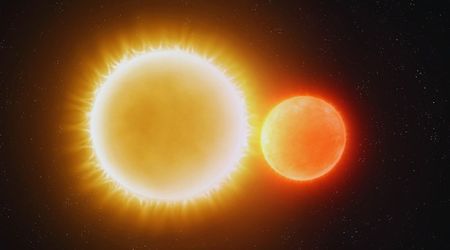NASA experts reanalysed the chances of giant asteroid hitting Earth in 2032 — new findings stunned them

When news about a giant asteroid heading towards Earth surfaces on the internet, panic grips people around the world. Earlier, NASA reported an asteroid was going to hit Earth in 2032, with high chances of it causing severe damage. The latest reports, however, suggest that this might not happen as the chances of the asteroid hitting Earth have fallen to 0.0017%, as per CNET. This number allows us to breathe a sigh of relief as the chances are almost negligible. An asteroid hitting Earth has various dangerous repercussions that include mass destruction, wiping out life, and the release of energy.

Asteroid 2024 YR4 is 40 to 90 meters in width and much smaller than the one that destroyed the dinosaurs. However, an impact with Earth could still cause death and destruction and would have released energy equal to 7.8 megatonnes of TNT explosive. This resulted in a planetary defense response that closely tracked the asteroid’s trajectory, according to The Guardian. The initial possibility of an impact in 2032 increased to 3.1% on February 18, but NASA states that it has now dropped to 0.0017%, with a 99.9983% chance that the asteroid will miss Earth.

As observations continue, there is still a fraction of a chance that the asteroid 2024 YR4 might impact the Moon on December 22, 2032. The probability of a lunar impact is currently 1.7%. “This asteroid was a good demonstration of why we have these procedures, and of them working as expected: a higher than normal, but still very low, risk triggered further observations and planning, and these observations let us rule out an impact,” said Colin Snodgrass, a professor of planetary astronomy at the University of Edinburgh, about the asteroid’s impact probability.

The observation of asteroid 2024 YR4 will continue and is funded by NASA’s Planetary Defense Coordination Office. Though the asteroid no longer poses a threat of impact with Earth, 2024 YR4 gave the perfect opportunity for experts at NASA and its various institutions to test planetary defense science and notification processes. This was useful as experts warned that asteroid impact alerts might become more frequent in the future.

“We should get used to alerts like this – as the new Vera Rubin Observatory starts scanning the skies later this year, we will find many more asteroids, and some will no doubt require further attention to rule out impacts,” Snodgrass commented about the future testing of alarms. “This shouldn’t be a cause for alarm, it is a sign that our technology is improving and we are doing better at discovering asteroids, and means that, if we do find one coming towards Earth, we have a better chance of finding it with enough warning time to do something about it,” he added.

NASA’s observation of the asteroid 2024 YR4 is continuously updated on their planetary defense website. The observations spanned various situational surroundings of the asteroid and its trajectory. The asteroid was termed ‘near-Earth,’ with its trajectory being invisible and untraceable during initial observations. Calculations of the 2032 impact, shifting from the Earth to the Moon and its various percentages of likelihood, were steadily tracked and informed. They also sought to increase their accuracy during the advent of darker skies, which allowed better sight.









